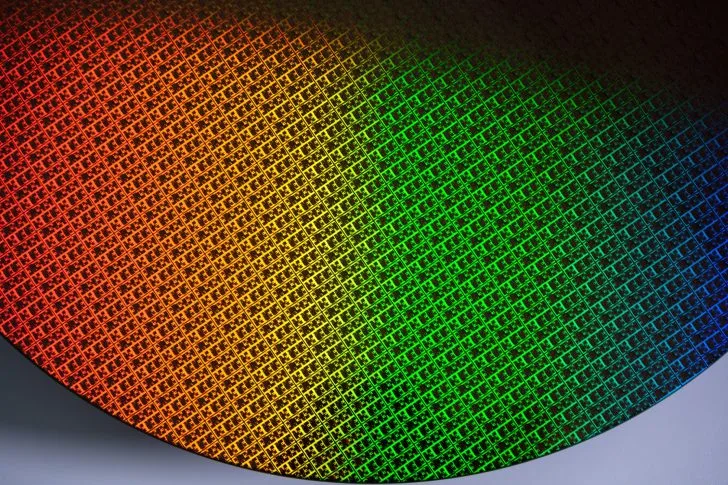Intel’s 18A chip enters risk production, signaling a potential comeback in the semiconductor industry. Learn about its features, timeline, and impact on the tech world.
Table of Contents

Breaking: Intel’s 18A Chip Enters Risk Production, Shaking Up the Tech World
Are you ready for a seismic shift in the semiconductor industry? Intel, the tech giant that’s been fighting an uphill battle in recent years, has just dropped a bombshell that’s got the entire tech world buzzing. Their highly anticipated 18A chip has officially entered risk production, and it’s not just another incremental step – it’s a potential game-changer that could rewrite the rules of the semiconductor game.
The 18A Chip: Intel’s Secret Weapon Unveiled
Let’s cut to the chase: What exactly is the 18A chip, and why should you care? Here’s the lowdown:
- Cutting-Edge Technology: The 18A process node is Intel’s most advanced chip manufacturing technology to date, promising unprecedented performance and efficiency.
- BSPDN Magic: One of the crown jewels of 18A is its Backside Power Delivery Network (BSPDN). This isn’t just tech jargon – it’s a revolutionary approach that could give Intel a significant edge over competitors.
- Density Matters: We’re talking about a macro bit density of 38.1 Mb/mm². In layman’s terms? More power packed into a smaller space, which is the holy grail of chip design.
- AI Performance Boost: Expect a significant leap in AI capabilities with the 18A chip, potentially revolutionizing everything from your smartphone to data centers.

Risk Production: The Final Frontier Before Mass Production
Now, you might be wondering, “What’s the big deal about risk production?” Let’s break it down:
| Stage | Description | Significance |
|---|---|---|
| Risk Production | Initial, limited-scale production | Assesses manufacturability and performance |
| Mass Production | Full-scale manufacturing | Brings the product to market |
Kevin O’Buckley, Intel’s senior VP, puts it best: “Risk production, while it sounds scary, is actually an industry standard terminology. The importance of risk production is we’ve gotten the technology to a point where we’re freezing it.”
In other words, Intel is in the final stretch of perfecting the 18A chip before it hits the market. It’s like the dress rehearsal before the big Broadway show – and Intel is determined to make sure it’s a showstopper.
The Road Ahead: Panther Lake and Beyond
Intel isn’t just stopping at risk production. Here’s what’s on the horizon:
- Panther Lake CPUs: Expected to be the first to showcase the 18A technology, potentially launching later this year.
- Nova Lake and Clearwater Forest: Slated for 2026, these chips will further leverage the 18A process, pushing the boundaries of what’s possible in computing.
- Potential Partnerships: Rumors are swirling that tech giants like NVIDIA and Broadcom are eyeing the 18A process for future products. Could this be the start of a new era for Intel’s foundry business?
The Big Picture: Intel’s Comeback Story
Let’s not sugarcoat it – Intel has had a rough few years. With a 49.82% drop in stock value over the past 12 months, the pressure is on for new CEO Lip-Bu Tan to turn the ship around. The 18A chip isn’t just a product; it’s a statement of intent, a declaration that Intel is back in the game and playing to win.
FAQs: Everything You Need to Know About Intel’s 18A Chip
When will the 18A chip be available in consumer products?
While exact dates aren’t confirmed, Intel is aiming for mass production later this year, with Panther Lake CPUs likely to be the first products featuring the 18A technology.
How does the 18A chip compare to competitors like TSMC’s offerings?
The 18A chip aims to outpace TSMC in bringing sub-3nm technologies to market, particularly in gate-all-around (GAA) transistors and backside power delivery.
What industries could benefit most from the 18A chip?
The 18A chip’s advancements in AI performance and efficiency could revolutionize industries ranging from personal computing to data centers, autonomous vehicles, and more.
How might the 18A chip impact Intel’s position in the semiconductor market?
If successful, the 18A chip could help Intel regain its leadership position in semiconductor manufacturing, potentially attracting major clients and boosting its foundry business.
What challenges does Intel face in bringing the 18A chip to market?
The main challenges include perfecting the manufacturing process during risk production, scaling up to mass production, and convincing potential clients to adopt the new technology.
The tech world is holding its breath as Intel’s 18A chip enters this crucial phase. Will it be the comeback story of the decade, or another setback for the once-dominant chip maker? One thing’s for sure – the semiconductor landscape is about to get a lot more interesting. Stay tuned, tech enthusiasts – the next chapter in computing history is being written as we speak!








